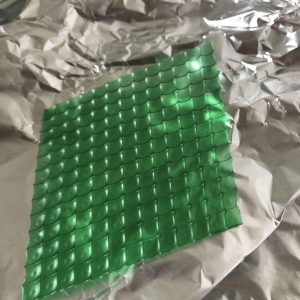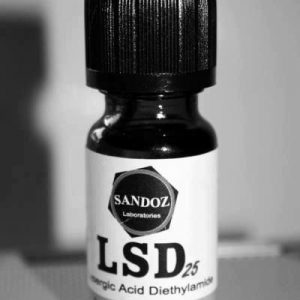Lysergic Acid Diethylamide
Lysergic acid diethylamide…
Generic Name: Lysergic acid diethylamide (LSD)
Common or street names: LSD is sold under more than 80 street names including Acid, Blotter, acid, Doses, Dots, Trips, Mellow Yellow, Window Pane, as well as names that reflect the designs on sheets of blotter paper (for example, “purple dragon”).
What is LSD?
lysergic acid diethylamide, first synthesized in 1938, is an extremely potent hallucinogen. It is synthetically made from lysergic acid, which is found in ergot, a fungus that grows on rye and other grains. It is so potent its doses tend to be in the microgram (mcg) range. It’s effects, often called a “trip”, can be stimulating, pleasurable, and mind-altering or it can lead to an unpleasant, sometimes terrifying experience called a “bad trip.”
In the U.S., LSD is illegal and is classified by the Drug Enforcement Agency (DEA) as a Schedule 1 drug, meaning LSD has a high potential for abuse, has no currently accepted medical treatments, and has a lack of accepted safety for use under medical supervision. However, despite being a Schedule 1 substance, there has been a resurgence of interest in potential therapeutic uses for LSD, such as for the treatment of alcoholism and depression. Studies that conform to modern research standards are currently underway that might strengthen our knowledge on the use of LSD.
More:
It is produced in crystalline form and then mixed with other inactive ingredients, or diluted as a liquid for production in ingestible forms. Also, It is odorless, colorless and has a slightly bitter taste.
Usually it’s found on the streets in various forms, for example:
- blotter paper (LSD soaked onto sheets of absorbent paper with colorful designs; cut into small, individual dosage units) – the most common form
- thin squares of gelatin (commonly referred to as window panes)
- tablet form (usually small tablets known as Microdots) or capsules
- liquid on sugar cubes and
- Also, pure liquid form (may be extremely potent)
Some people may inhale LSD through the nose (snort) or inject it into a vein (shoot it up). As well as, there is no way to predict the amount of LSD that is contained in any form consumed.
Other hallucinogens include:
- Psilocybin (Magic Mushrooms, Shrooms)
- Mescaline (Peyote, Buttons, Cactus)
- Phencyclidine (PCP, Angel Dust)
- Ayahuasca (DMT)
- Salvia divinorum (salvia)
Effects of LSD Use
LSD is a mind-altering drug. It is thought LSD causes it’s characteristic hallucinogenic effects via interaction with the serotonin receptors in the brain. Serotonin is a neurotransmitter that helps control your behavior and mood, governs your senses, and moderates your thoughts.
The physical effects of LSD are unpredictable from person-to-person. Usually, the first effects of the drug when taken by mouth are felt 30 to 45 minutes after taking it, peak at 2 to 4 hours, and may last 12 hours or longer. Moreso, Use by the intravenous (IV) route will produce a much quicker action, usually within 10 minutes. Effects include:
- hallucinations
- distorted visual perception of shapes, colors
- altered sounds
- anxiety and depression
- flashbacks (a return of the “trip” experience) days or months later
- rapid heart rate, increased body temperature and high blood pressure
- Also, dilated pupils
Extreme changes in mood can occur. If taken in large enough doses, the drug produces delusions and visual hallucinations. Overdose can lead to severe psychosis. Also, death is often due to a direct injury while under LSD influence; there is no known lethal dose of LSD.
The physical effects can also include:
- nausea,
- loss of appetite,
- increased blood sugar,
- difficulty sleeping,
- dry mouth,
- tremors and
- Also, seizures.
More;
The user may also experience impaired depth and time perception, with distorted perception of the size and shape of objects, movements, color, sound, touch and their own body image. Sensations may seem to “cross over,” giving the feeling of hearing colors and seeing sounds. Also, These changes can be frightening and can cause panic. Some LSD users also experience severe, terrifying thoughts and feelings, fear of losing control, and fear of insanity or death.
An experience with LSD is referred to as a “trip”. Acute, disturbing psychological effects are known as a “bad trip”. These experiences are lengthy, with the effects of higher doses lasting for 6 to 12 hours, and it may take 24 hours to return to a normal state.
Health Hazards and Flashbacks with LSD
Under the influence of LSD, the ability to make sensible judgments and see common dangers is impaired, making the user susceptible to personal injury or death.
After an LSD trip, the user may suffer acute anxiety or depression, and may also experience flashbacks (also called hallucinogen persisting perception disorder), which are recurrences of the effects of LSD days or even months after taking the last dose.
- A flashback occurs suddenly, often without warning, usually in people who use hallucinogens chronically or have an underlying personality problem.
- Healthy people who only use LSD occasionally may also have flashbacks.
- Bad trips and flashbacks are only part of the risks of LSD use. LSD users may also manifest relatively long-lasting psychoses, such as schizophrenia or severe depression.
LSD produces tolerance, meaning the user needs greater doses of LSD to get the same high. Some users who take the drug repeatedly must take progressively higher doses to achieve the state of intoxication that they had previously achieved. Also, this is an extremely dangerous practice, given the unpredictability of the drug.
Extent of LSD Use
The National Survey on Drug Use and Health (NHSDA) in 2018 estimated that 5.6 million people aged 12 or older were past year users of hallucinogens (which includes LSD, PCP, peyote, mescaline, psilocybin mushrooms, Ecstasy, ketamine, DMT/AMT/“Foxy,” and Salvia divinorum), corresponding to 2% of the population.
The percentage of people aged 12 or older in 2018 who were past year hallucinogen users was higher than the percentages in 2015 and 2016, but it was similar to the percentage in 2017.
Furthermore, the rates of LSD use remain low among youth in the U.S. In 2018. it was estimated that 376,000 adolescents aged 12 to 17 were past year users of hallucinogens, which corresponds to about 1.5% of adolescents. The percentage of adolescents in 2018 who were past year hallucinogen users was lower than the percentages in 2015 and 2017. Moreso, it was similar to the percentage in 2016.
More details:
In 2019, based on data from NIDA’s Monitoring the Future 2019 Survey Results: Overall Findings, past year illicit drug use for LSD among surveyed 12th graders was 3.6%, far below illicit drug use for marijuana, which stood at 35.7%.
Between the years 2015 to 2016, trends in annual prevalence of use of LSD for Grades 8, 10, and 12 combined were 1.9% (2015) and 2.0% (2016), a +0.1 points percentage increase. The Monitoring the Future National Survey Results on Drug Use: 2016 Overview. Key Findings on Adolescent Drug Use found that “generational forgetting” — students stating that they are not familiar with the drug — has resulted in a decline in perceived risk of LSD among younger groups, which may put them at higher risk of use in future years. More so, This points to the need for continued education over time on all illicit drugs (including hallucinogens) that may be a risk for youth.
Treatment for LSD Use
Once a decision is made to obtain treatment, there are several steps to take.
- Speak to a healthcare provider to help direct you to reliable sources of help and monitor your progress.
- Talk therapy (behavioral counseling) and group counseling may be an option to help you understand your behaviors and why you continue to use LSD.
- Keep your appointments and follow your providers treatment plan. Consider including trusted family or friends in your treatment plan.
- Take care of yourself: exercise, eat healthfully, and control your stress level. Surround yourself with supportive people.
- Added medical therapy may be needed to treat symptoms due to drug use, such as anxiety, depression, or schizophrenia.
- Work to find new hobbies and interests that will take your mind off of drug use. Also, Consider a volunteer opportunity.
- Also, each day make an effort to stay away from people who abuse drugs, even if they are former friends.
| Select Quantity | 1 vival, 3 vival, 6 vival |
|---|
2 reviews for Lysergic Acid Diethylamide
Add a review Cancel reply
Related products
LSD
LSD
LSD
LSD
LSD












Fred Lee –
Thanks so much for my product ..the quality is good though I wasn’t secured from the beginning ordering from you but believe me am coming for more and in greater quantity. Thanks again.
Brooke Winifred –
Fast shipping, research conducted at 25ug, results very promising, further testing required